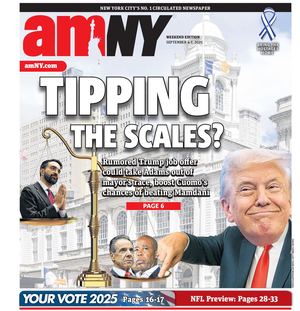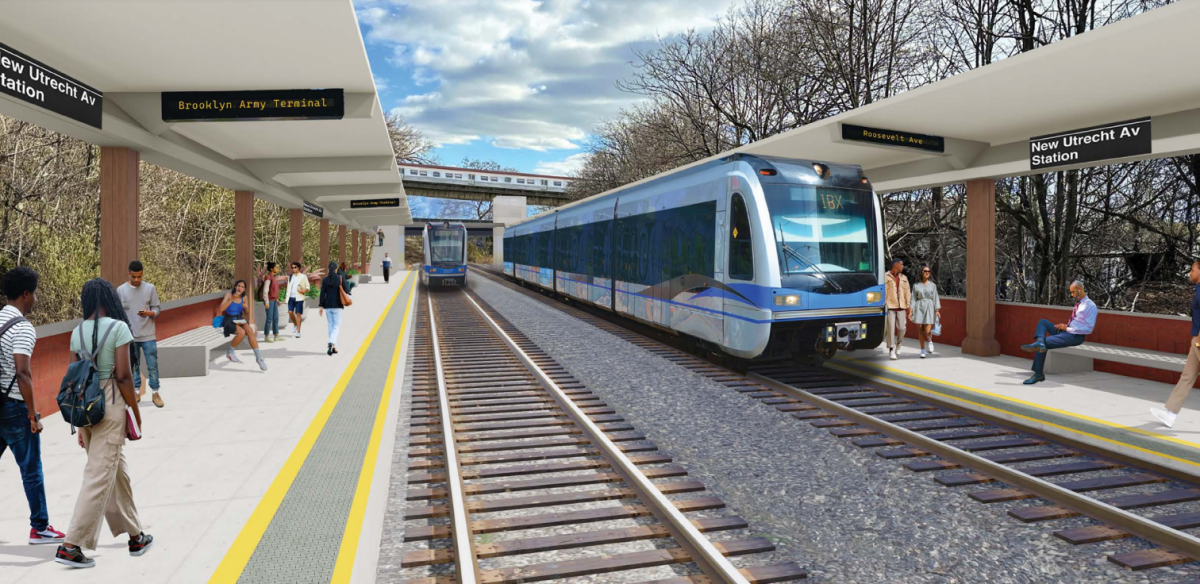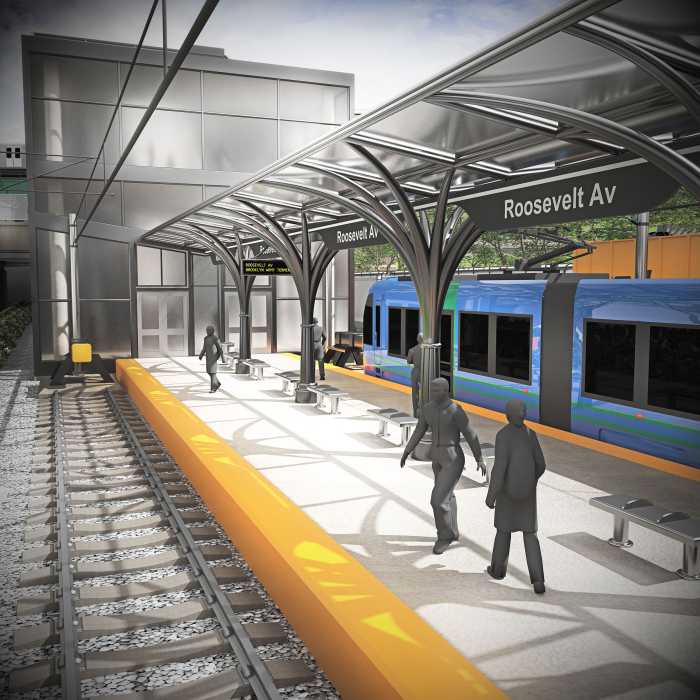Gov. Kathy Hochul and the MTA are moving forward with a revolutionary plan known as the “Interborough Express” (IBX), a new 14-mile passenger rail line that will run through the hearts of Brooklyn and Queens along a corridor used for infrequent freight trains.
The IBX is an idea whose time came long ago, but is finally coming to fruition at a moment where New York City’s population is booming, more people are dependent on transit than automobiles, and too many neighborhoods lack access to subway service.
It’s not the subway, but the IBX promises to be the next best thing. The $5.5 billion project will connect 18 different subway lines and give people living in southern Brooklyn and northwest Queens an easier, quicker, one-seat way to travel between regions without having to connect to multiple different train lines — and travel into Manhattan to do so.
Such a massive change to New York’s transit infrastructure is not solely about making traveling easier for everyone. The IBX will open up a host of other opportunities to help the city grow, namely through real estate.
Many of the neighborhoods through which the IBX route passes — such as Maspeth and Middle Village in Queens and Midwood and Canarsie in Brooklyn — are lined with low-density housing or have industrial uses. One reason these areas have such a “character” is a lack of easy transit access; the IBX will naturally change that.
A real estate expert who spoke to amNewYork about the project said the IBX has the potential to “unlock 70,000 or more new units along the route through rezoning” — which would be welcome news at a time when New York grapples with the worst housing affordability crisis in its history due to high demand and low supply.
Naturally, there will be residents and elected officials in these communities who will bristle at the thought and fight back, not wanting to lose their neighborhood’s character. But resorting to NIMBYism to oppose the IBX isn’t enough of an argument to stop it.
A more genuine concern is the impact of potential gentrification along the IBX line, and the project planners and the city must take that seriously.
Most of the new housing created along the IBX should be made affordable for the vast majority of New Yorkers. Residents in the communities where the line will run should be given preference. A neighborhood’s true character, after all, is built on the people living in a community rather than the housing stock itself.
Anything less would defeat the purpose of the IBX: A transit link to bring more New Yorkers together, helping them get around the city they love faster and more affordably.








































